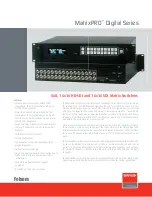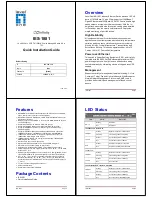
Network Configurations and Cable Connections
3-2
893-743-A
Building Network Configurations
The simplest type of System 2000 network is a small standalone network that
does not require SNMP-based network management. Starting with a single
Model 280x hub, you can connect a maximum of 16 10BASE-T stations to a
local Ethernet segment. Local hub management in the Model 280x hub
provides monitoring and control functions through an easy-to-use ASCII
terminal interface. As the number of users on the segment grows to greater than
16, multiple Model 280x hubs can be interconnected via the MDI-X/MDI
switchable port 1, or through the AUI or fiber backbone interconnect ports. (For
a description of how to use the MDI-X/MDI port, see Appendix B, “LEDs and
Switches.”) However, as the network grows, so does the need for management.
As you increase the station count, the ability to add SNMP management
support becomes increasingly important.
At this point, you can add a single Model 281xSA hub and connect up to four
Model 280x hubs through expansion ports, creating a Model 281xSA/280x hub
cluster. This arrangement provides Advanced Analyzer SNMP management for
all stations (up to 80) connected to the cluster. It also increases the number of
available ports in two ways:
■
This configuration adds the 16 ports on the Model 281xSA hub to the total
number of available ports.
■
The cluster frees the MDI-X/MDI ports on the hubs for station
connections (if you were formerly using the MDI-X/MDI ports for
interconnection).
Perhaps the most important feature of this cluster, in terms of future expansion
capabilities, is that by using the expansion ports to cluster the hubs, you have
reduced to one the number of repeaters in the cluster. The retiming function is
distributed among all units in the cluster, and the cluster operates in the
network as a single logical IEEE 802.3 repeater.
To increase the network size beyond 80 ports, you can begin interconnecting
the cluster to other hubs. Because System 2000 hubs are compatible with other
System 2000 and System 3000 products, they can be used to connect a
10BASE-T workgroup into a larger enterprise network. Clusters can serve as a
local workgroup in a very large network using larger hubs, or clusters
themselves can be interconnected. Clusters are treated like single hubs in these
configurations.















































